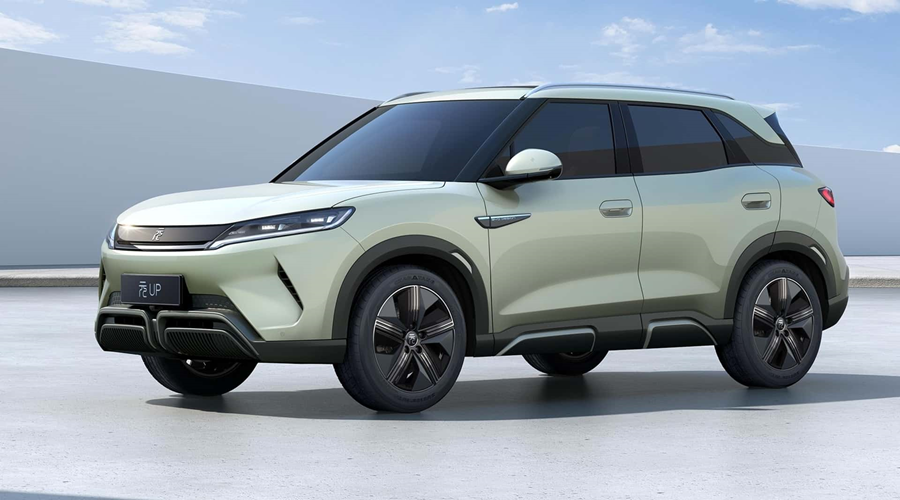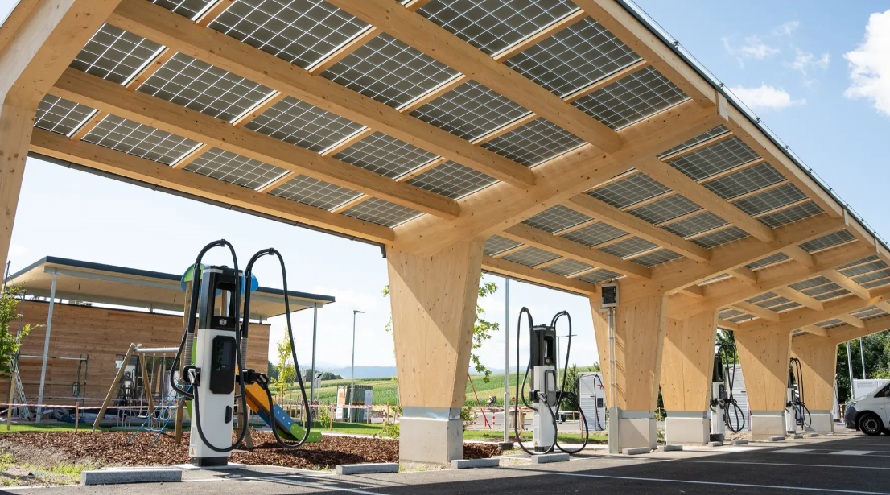In the first half of 2025, sales of electrified vehicles in Colombia doubled those of diesel-powered cars.
According to data published by ANDEMOS, electrified vehicle sales reached 33,921 units, while diesel vehicles accounted for 16,960 units.
Of the electrified total, 7,999 were fully electric vehicles (EVs), representing a 203.49% increase compared to the same period in 2024.
Non-plug-in hybrids recorded 23,866 units, marking a 46.2% year-on-year rise.
Plug-in hybrids also saw growth, reaching 1,687 units sold—an increase of 95.93%.
Top Vehicle Brands: Electrified vs Diesel
As of mid-2025, the leading brands in the electrified segment were Toyota (6,511 units), BYD (3,994), Suzuki (3,850), and Mazda (3,613).
For diesel vehicles, the top sellers were again Toyota (4,349 units), followed by Chevrolet (2,916), Foton (2,281), and Ford (1,169).
Although diesel vehicles remain popular, their growth is more moderate compared to the sharp rise in electrified models.
Leaders in Diesel and Electrified Segments: What Do They Cost?
In the diesel segment, the JMC (3x1044c6) led the rankings with 503 units sold, followed by the Chevrolet NLR with 426 units.
Other notable models included the Jac HFC1036KN EVI (424 units), the Foton BJ1044SWDJBA-R3 (391), and the Foton BJ1128VEJED-R3 (363).
Approximate prices for these diesel models range between USD $19,500 and $23,000.
In the electrified category, the Toyota Corolla Cross topped the list with 4,076 units sold, followed by the Mazda CX-30 (2,702), BYD Yuan Up (2,196), Suzuki Swift (1,664), and Renault Arkana (1,513).
Prices for these electrified models range from approximately USD $18,500 to $35,000.
Electrification Gains Momentum
In an interview with Mobility Portal Latin America, BYD—Colombia’s top-selling electric vehicle brand—highlighted the importance of supporting the country’s reindustrialisation and adapting to local operational conditions.
“As Chinese manufacturers, we also want to contribute to the country. Part of that means promoting the national industry—not only in chassis assembly but also in the bodywork sector, which is very strong in Colombia,” said Fabián La Rotta, Project Manager at BYD Colombia.
He added: “We’re supporting this reindustrialisation policy, which we know takes time, but we’re making a strong contribution.”
In the electric bus segment, Chinese brand BYD has introduced models currently in pilot stages, undergoing testing under local conditions.
“These vehicles are ready for commercialisation, but we first run operational tests to fine-tune maintenance plans and ensure they can operate for longer periods,” he explained.
The tests include load simulations and analysis of road conditions in Bogotá to ensure the vehicles can meet the demands of mass transport systems.
Reindustrialising Electric Mobility in Colombia
In early 2024, Colombia’s Ministry of Mines and Energy (MEM) launched its reindustrialisation strategy for electric mobility, focusing on local production and workforce transformation.
The aim is to harness Colombia’s potential to produce and export new electric vehicles, positioning the country as a leader in EV manufacturing in Latin America.
According to industry sources, the success of the Reindustrialisation Plan largely depends on enhancing existing incentives and creating a favourable investment environment.
For the National Business Association (ANDI), this means developing a sector-specific recovery plan that includes tax reductions, subsidies for services tied to production, VAT refunds for domestic purchases and exports, and preferential criteria for purchasing locally made goods—especially under fleet renewal programmes.
Hybrid Boom and Electrified Vehicle Segmentation
Within the electrified vehicle market, non-plug-in hybrids continue to dominate with 23,866 units sold. However, the significant rise in fully electric vehicle sales (7,999 units) indicates growing consumer interest in zero-emission mobility.
In terms of segmentation, utility vehicles remain the most in-demand among electrified models, with 26,402 units sold in H1 2025—a 73.2% increase.
This reflects a preference for vehicles suited to both work and urban transport, offering a balance of energy efficiency and load capacity.
The passenger car segment also continues to expand, with 5,568 units sold (a 41.8% rise), while the pick-up truck segment showed remarkable growth—reaching 509 units, up 320.7%.
READ MORE
-
UK enters a “decisive” phase: can the charging network ease range anxiety enough?
The government recently announced that it has reached 82,000 public charging points. This is a positive sign for those who own or are considering purchasing an EV. However, beyond focusing on quantity, the UK must also prioritize quality. Which areas have the least charger coverage?
-
From Amsterdam to Pamplona: Sungrow targets eMobility leadership with European I+D and local presence
With an innovation centre in the Netherlands and an operational hub in Spain, the global firm combines technology tailored to the European market with local stock, after-sales support, and integrated solutions. Its goal: to lead the EV charging infrastructure market with efficiency and proximity.
-
With 38 charging bays, one of Austria’s largest EV parks begins operation
Once fully developed, the charging park will offer a total of 50 charging bays. The area will also offer a wide range of amenities, including playgrounds, toilet facilities, and a bistro.










